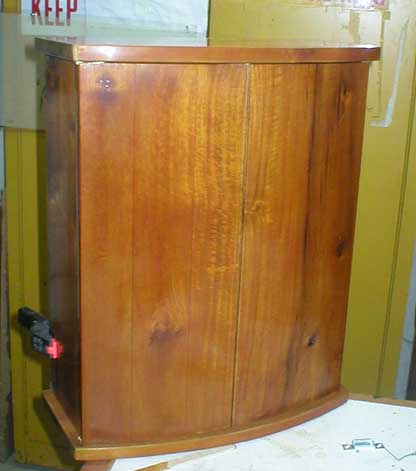The high risk part of knife hinge installation is the positioning and cutting of the hinge mortises in the cabinet's top and bottom. Be off just a little on any of the four mortises and the doors won't close correctly. The coopered doors make things even more interesting because the sides of these mortises don't parallel either the front or back edge of the cabinet's top or bottom. Why did I ever decide to do coopered doors for this "quick and dirty" little cabinet?
With the cabinet carcass/carcase dry fit and the female parts of the hinges installed on the doors, I positioned the doors where and how I wanted them. With a sharp 2B pencil, I traced the outline of the exposed parts of the hinges on the door onto the top and bottom of the cabinet.

With the round end of the hinges penciled on the top and bottom of the cabinet I once again took the cabinet apart. Using the penciled outline of the rounded end of the hinge on the door as the reference, I placed the male part of the hinge on the bottom of the cabinet. Got the angle about right and scribed its outline with a single bevel marking knife. Unlike a scratch awl, which scratches and tears the wood, a knife severs the grain and is less apt to wander, following the grain.
Now to cut mortises in the top and bottom of the cabinet ----->
<--- to the previous page
<----- back to the coopered door cabinet index
<----- back to the main index